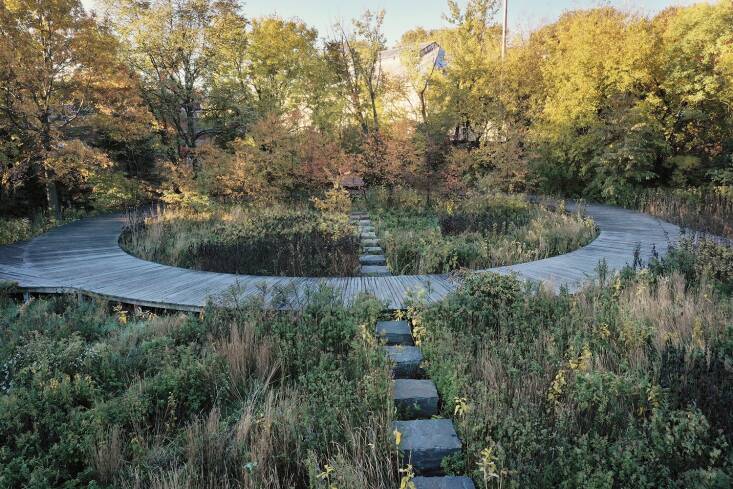This is part of a series with Perfect Earth Project, a nonprofit dedicated to toxic-free, nature-based gardening, on how you can be more sustainable in your landscapes at home.
Not far from the Brooklyn waterfront, the Naval Cemetery Landscape (NCL) is both a memorial to the dead and a haven for the living, teeming with lush native plants and countless birds and pollinators. “By purposefully bringing in life through an abundance of plants to a space that memorializes the dead, the landscape honors the cycles of life,” says Avvah Rossi, the landscape’s Director of Horticulture and Greenway Stewardship.
The land has had many lives over the centuries: It was once fertile farmland with fruit orchards and vegetable plots. Then, it spent the next 150 years at the service of the military, housing a naval yard, hospital, and cemetery where thousands of bodies rested before being mostly relocated in the early 20th century. The site later sported a recreational space equipped with a ballfield and hiking trails. When the land was decommissioned by the Navy in the 1990s, the city discovered that hundreds of bodies still remained buried in the earth there. In 2016, Brooklyn Greenway Initiative, the nonprofit that operates and manages the NCL, hired the landscape architecture firm Nelson Byrd Woltz to transform the land into a public place that honors the dead and the land’s rich history. Today, it also serves as a place of respite and grounding for the community and anyone using the adjacent Brooklyn Waterfront Greenway.

At the heart of the landscape is a 1.8-acre meadow that abounds with more than 50 different native plant species, including milkweed, asters, switchgrass, and bee balm—all selected to support bees, butterflies, moths, birds, and other wildlife. Tree snags stand on the perimeter, providing habitat. A wooden boardwalk meanders through the meadow echoing the path of the Wallabout Creek that once ran freely through the area. The Brooklyn Greenway Initiative maintains the garden sustainably, seeking to restore the land as they care for it. “We aim to layer the ecological needs of the landscape wherever we can by mimicking nature as much as possible,” says Rossi.







